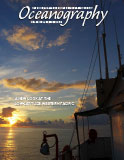First Paragraph
Bottom trawl fishing is among the most destructive anthropogenic pressures acting on benthic ecosystems, but the full extent of the damage is undocumented because of the limited number of deep-sea observations of impacted regions (e.g., Brennan et al., 2012, 2016). As part of its continuing ocean exploration mission, in 2011, E/V Nautilus conducted a remotely operated vehicle (ROV) survey along a transect in a submarine canyon in the Mediterranean’s Alboran Sea off southern Spain at depths ranging from 1,200 m to <300 m (Coleman et al., 2012). This exploration along the South Alboran Ridge offered the opportunity to directly observe with video the bathymetric extent and intensity of recent trawling damage to the seafloor in this area. This dive revealed large furrows running in multiple directions caused by trawl doors scraping across the seabed. Little biological activity was evident in the depth ranges where these scars were observed. The destructive nature of bottom trawl fishing should be viewed with the same public affront as subaerial clear-cutting of forests and strip-mining. The only difference is that the ocean hides trawl damage from the public eye. The more we explore the deep sea, repeatedly map the seafloor with sonar, and observe the seabed and its ecosystems with video captured by ROVs, the greater we can understand the full impacts of trawling.

